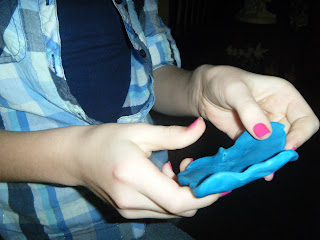
It sinks also!




How does this work?
Whether something sinks or floats has nothing to do with how much an object weighs. We didn't change the weight of the obects; we changed the shape. An object floats or sinks based upon how much water is displaced, or "pushed aside." The "boat" made out of clay was bigger than the ball of clay and displaced, or pushed aside, more water causing it to float. The marbles couldn't float because they were small and couldn't push enough water out of the way to equal the same weight. So, it is important to remember that anything that floats weighs the same as the water pushed out of the way. There is another factor that determines whether an object sinks or floats. Density also plays an important part.
What is density? Density is a measure of mass per unit of volume
Density = mass/ volume
What is volume?
Volume, also called capacity, is a quantification of how much space an object occupies.
The density of an object depends upon its weight and size(or voulme).If two solid objects are different sizes, but weigh the same, the smaller object is more dense because it is more compacted.
If an objects floats on water, then it is less dense than the water itself. If it sinks, then it is morse dense than water.
Here's a look at density: http://www.nyu.edu/pages/mathmol/textbook/density.html
These very principles are also used in shipmaking and boat making. Even though some boats are huge, they still float. This is because they are metal shells that are filled with air. They are less dense and lighter than the water they push aside, or displace, and this allows the boat to float.
I think this would be a great experiment to use in the classroom. I think everyone wants to know just how a boat can float when it is so big. I know when I was a child it amazed me to see such big ships floating on the water. It even amazed me that I could float in the swimming pool. :) This experiment could be used to teach about density, water displacement, and volume. Students could also have fun with the experiment by seeing who could make their boat hold the most marbles.
Here is a website that calculates density for us: http://www.1728.com/density.htm

